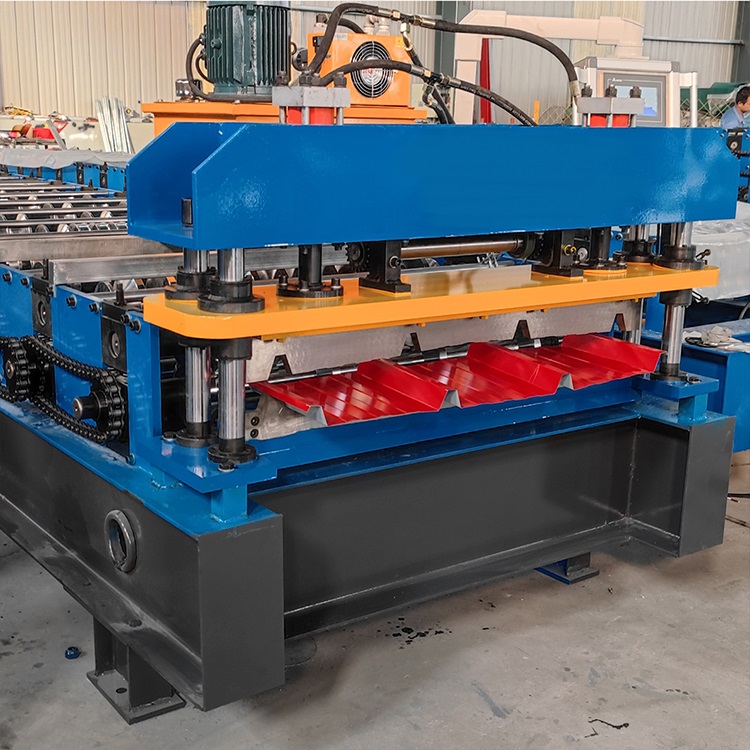Adjustable Z Purlin Roll Forming Machine for Versatile Metal Fabrication Solutions
The Evolution and Importance of Changeable Z Purlin Roll Forming Machines
In the world of metal fabrication, efficiency and versatility are paramount. Among the many tools of the trade, the changeable Z purlin roll forming machine has emerged as a significant innovation, transforming the way manufacturers produce structural components. This specialized machinery not only streamlines production processes but also promises a high degree of customization—a vital attribute in today's ever-evolving construction landscape.
Understanding Z Purlins
Before delving into the mechanics of roll forming machines, it's essential to grasp what Z purlins are. Z purlins are structural steel components that are primarily used in building frames and other construction applications. They are named for their distinct Z shape, which aids in transferring loads and providing structural stability. Often employed in the construction of warehouses, factories, and other large structures, Z purlins come in a variety of sizes and thicknesses to meet specific project requirements.
The Mechanics of Changeable Z Purlin Roll Forming Machines
A changeable Z purlin roll forming machine is designed to produce purlins of varying sizes and shapes with minimal downtime. Its primary function is to continuously shape flat metal sheets into the Z profile through a series of rollers, with the flexibility to modify the dimensions as needed.
The core advantage of these machines lies in their modular design. Unlike traditional roll forming machines that are often dedicated to a single product size or shape, changeable Z purlin roll forming machines can adapt to different specifications rapidly. This adaptability is achieved through a combination of adjustable roller stations and a computerized control system that allows operators to input new dimensions seamlessly.
Benefits of Using Changeable Z Purlin Roll Forming Machines
1. Enhanced Efficiency With the capability to switch between different purlin sizes without the need for extensive manual reconfiguration, these machines significantly reduce production lead times. This efficiency is crucial for companies looking to meet tight deadlines in construction projects.
changeable z purlin roll forming machine

2. Cost-Effectiveness By minimizing material waste and optimizing production processes, changeable Z purlin roll forming machines can lead to reduced manufacturing costs. Manufacturers can produce only what is necessary, maintaining a lean inventory and cutting down on excess material expenditure.
3. Quality Control Utilizing advanced technology, these machines ensure consistent quality across all produced components. Automated systems monitor the dimensions and tolerances during the manufacturing process, which helps maintain high standards and reduces the likelihood of human error.
4. Customization The ability to quickly switch between different purlin designs allows manufacturers to cater to a diverse range of client needs without investing in multiple specialized machines. This flexibility opens up new business opportunities and enhances customer satisfaction.
The Role of Technology in Modern Roll Forming
The integration of technology into roll forming processes has revolutionized the industry. Modern machines are equipped with advanced features such as touchscreen interfaces, real-time monitoring, and even remote diagnostics. These technological advancements enable operators to make informed decisions quickly and respond to any issues that may arise during production.
Moreover, automation is playing an increasingly vital role in reducing manual labor requirements, thus enhancing workplace safety. With robotic systems handling heavier lifting tasks, the overall risk of injury in production environments is significantly lowered.
Conclusion
As the demands of the construction industry evolve, so too must the tools we use to meet these challenges. Changeable Z purlin roll forming machines stand at the forefront of this evolution, combining flexibility, efficiency, and advanced technology to meet the diverse needs of modern constructions. For manufacturers, investing in such machinery is not merely a decision about equipment but a strategic move towards maintaining competitiveness in a growing landscape. As the industry continues to innovate, these machines will undoubtedly play a crucial role in shaping the future of construction and structural design.
-
Roof Panel Machines: Buying Guide, Types, and PricingNewsJul.04, 2025
-
Purlin Machines: Types, Features, and Pricing GuideNewsJul.04, 2025
-
Metal Embossing Machines: Types, Applications, and Buying GuideNewsJul.04, 2025
-
Gutter Machines: Features, Types, and Cost BreakdownNewsJul.04, 2025
-
Cut to Length Line: Overview, Equipment, and Buying GuideNewsJul.04, 2025
-
Auto Stacker: Features, Applications, and Cost BreakdownNewsJul.04, 2025
-
Top Drywall Profile Machine Models for SaleNewsJun.05, 2025








